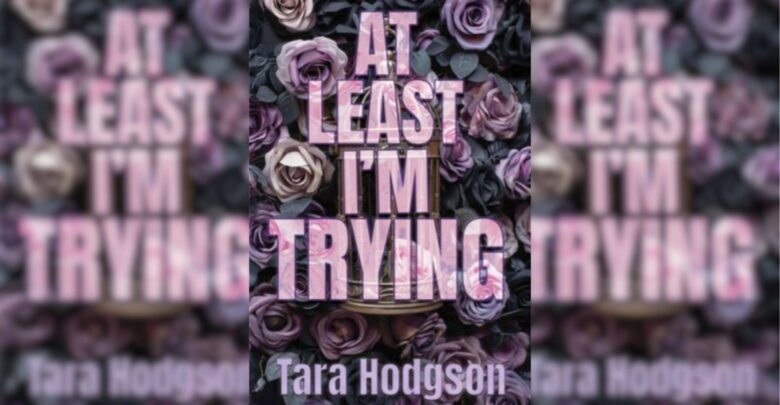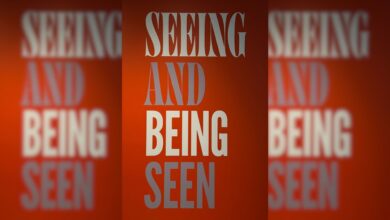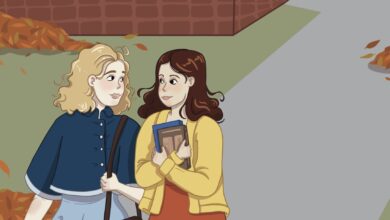Book Review: ‘At Least I’m Trying’ by Tara Hodgson
At Least I’m Trying is a captivating and unflinching young adult read that addresses teenage mental health struggles, the dangers of social media, and the proximity and prevalence of sex trafficking in Canada.
 Supplied
SuppliedTrigger warning: This article discusses topics related to sexual violence that some readers may find upsetting. Resources are available at the end of this article.
The Alberta-based author Tara Hodgson doesn’t shy away from the dark aspects of teenage girlhood in her second book, At Least I’m Trying. As a long-time teacher, Hodgson is passionate about the rising impact of social media on youth mental health. Within her novel, she builds on the daily emotional pressures teens already face from parents, coaches, teachers, and friends. The protagonist, Reese, experiences both mental health decline and social media dangers. Each of these factors contribute to Hodgson’s terrifyingly near portrayal of sex trafficking in Canada.
Reese is just two months away from graduation and she has it all. She has a college scout come to watch her volleyball team, unwaveringly perfect grades, early acceptance to her dream school, a loving boyfriend, and a caring best friend. But when she misses the ball by mere inches in her big game, everything that has already been cracking under the immense pressure of her parents begins to fall around her. She’s tired of being the star student, perfect daughter, and teenage good girl. So when Cassie, a mesmerizing classmate, invites her to skip school and hang out with her boyfriend and his (stunningly handsome) friend, Liam, she tags along. Soon, Reese is drawn into a world of parties, drinking, and sex. And while it’s freeing and exhilarating to become the opposite of everyone’s impossible expectations for her, she begins to fear that everything has gone too far.
The novel is set in the rumour-saturated, stifling landscape of small-town Cardothia, which Reese dreams of escaping. Hodgson cleverly uses “before” and “after” sequences to tie Reese’s current experiences to their horrific outcome. These sequences create suspense and even terror in the reader. Although the novel is contemporary, there are certain elements of psychological thriller, as readers witness Reese’s gradual mental health decline and follow her path to “after” with trepidation and building alarm.
Published in 2025, this book strikingly reflects our current North American landscape. A recent article by Stanford indicates correlations between a decline in youth mental health and increased social media use. And, between 2015 and 2019, Statistics Canada reported 115,859 reported sexual assaults. The report also notes that 89 per cent of reported victims were women or girls. Although, many assaults go unreported or uninvestigated.
These issues are prevalent in the temporal and spatial context of the book and the lives of many readers. As a young woman in Canada in 2025, mental health struggles, sexual assault, and fear of online and in-person threats to safety are experiences both myself and other women have faced. And, we will likely continue to face throughout our lives.
At Least I’m Trying is an emotionally-charged, difficult read for a variety of reasons. Its examination of heartbreaking issues are not far from home. And it forces readers to reflect on their own personal lives and the horrific prevalence of sex trafficking in Canada. It is both important and effective for readers to understand how near these issues are to their daily lives. However, it is also important for readers to take care of themselves while reading this novel. During this review, I occasionally had to step away from the book in order to protect my own mental health. Especially during particularly graphic passages or descriptions of strong emotional turmoil. For instance, Reese experiences intense feelings of inadequacy, worthlessness, and self-hatred throughout the book.
Although this is a young adult contemporary novel, it is also focused towards parents and educators of teens. Hodgson’s website states that “she is passionate about communicating the potential implications of a technology-centred world and spark necessary conversations about these impacts on teens.” Teenagers themselves are not the only, or arguably even the primary, audience of this blurb. Instead, Hodgson wishes to expand her audience to inform all mature readers about the dangers youth may face. In fact, within the novel, parents and coaches are alarmingly not engaged in understanding Reese’s or Cassie’s declining wellbeing or dangerous online presences. As a result, they do not intervene in the events of the novel as they unfold. The importance of adult awareness to prevent sex trafficking is thus forefronted in both the book and its intended audience.
Teens will certainly find in At Least I’m Trying a refreshingly honest and stark depiction of the real-world pressures. Notably, the social media sphere, and complex parental relationships that they navigate on a daily basis. As well, parents, educators, and guardians of youth will benefit from knowledge of signals which may alert to the dangerous interrelation of social media, teens’ emotional lives, and sex trafficking, particularly in North America.
At Least I’m Trying is a necessarily heavy read. Hodgson incorporates psychological elements, roots a present-day and local context, and employs current social media in her novel. By doing so, she creates a terrifyingly real example of the current dangers teenagers face. Its poignant emotions are purposefully intense. And they serve as a stark reminder to teens and adults alike to maintain awareness in both digital and physical spheres.
If you or someone you know is dealing with sex trafficking you can call the Canada Human Trafficking Hotline: 1-833-900-1010. You can find their website and more resources here.




